Love is in the air
POLLINATION
The natural world as we know it wouldn’t exist without pollination. We delve into the cool science of plant sex.
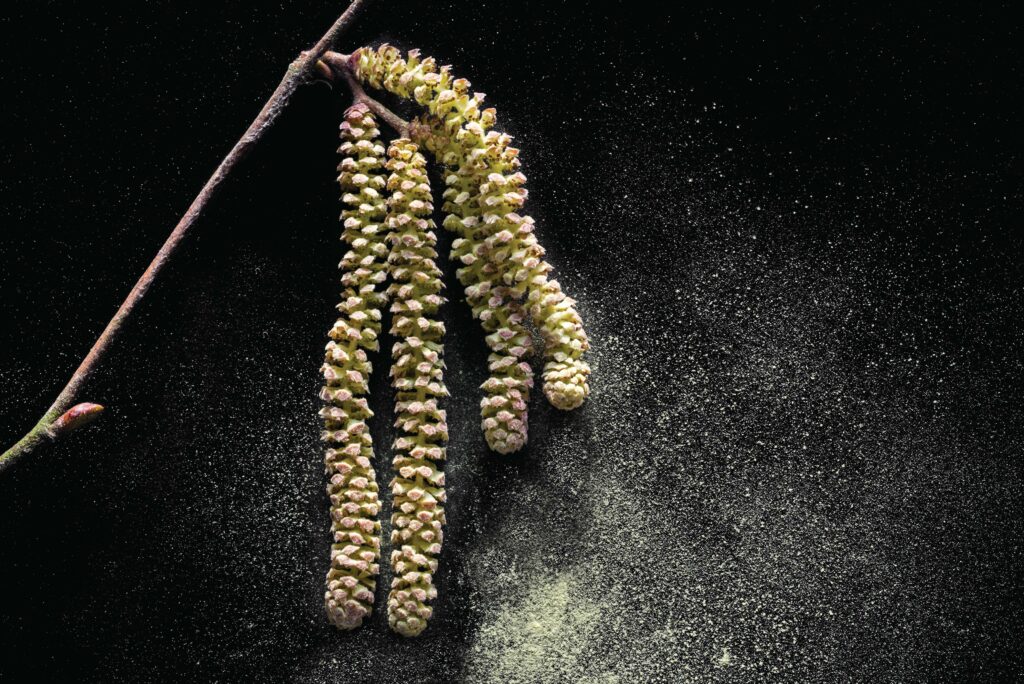
PLANTS, IN ALL their charismatic forms, are most famous – and most celebrated – for their flowers. Eight in ten species have them, and they come in all shapes and sizes. Cowslips and honeysuckles are equipped with trumpet-like, tubular flowers, while thistles have punky, purple flowerheads made up of lots of tiny blooms. There are miniature, corn-on-the-cob eelgrass flowers, water-lily flowers the size of your fist, and orchid flowers that mimic insects.
Why all this diversity? Well, you see, a plant has needs.
When mating season comes around, flowering plants engage in all the same behaviours as we do. They spruce themselves up, paying attention to how they look, how they smell and how they dress. And then, when they’re ready, they flirt. To walk through a hay meadow in June is to witness plants unashamedly getting their groove on. Just like in a nightclub, the air is full of perfume and there’s eyeing-up-and-down occurring everywhere you look.
But here’s where things are slightly different. Flowering plants aren’t trying to seduce each other. Not directly, at least. For millions of years, conifer-like, seed-producing plants used airborne pollen (generated by the male parts) to fertilise each other, but female reproductive surfaces are small, and a lot of it went to waste. Plants needed a more targeted courier service for collecting and delivering pollen, something more precise and economical than random gusts of wind. So they evolved flowers to attract insects (and later, other animals, such as birds and bats). Today, flowers are used by 80 per cent of plants to reproduce.
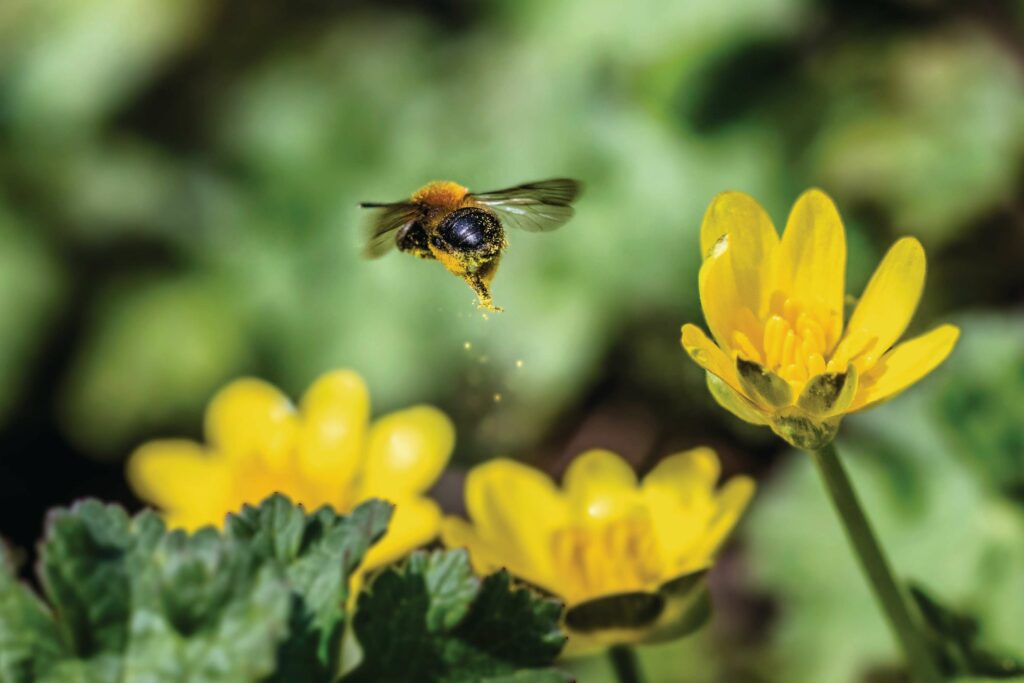
The process by which that happens – pollination – is quite literally plant sex. The premise is simple. A typical flower has two sets of reproductive parts: a female stigma and multiple male stamens. Pollen is transferred from the stamens of one plant to the stigma of another, fertilising the flower and initiating seed production (see diagram on the opposite page). It’s an elegant system that has been one of life’s greatest success stories. But how that pollen is transferred – well – that’s where it gets really interesting.
ANIMAL POLLINATION is a dance; a complex conversation between plant and pollinator. Plants and insects have evolved side by side for millions of years. Most plants offer insects a reward – usually in the form of sugary nectar to slurp – in exchange for visiting their flowers. But insects are spoilt for choice. On any given day, there can be thousands of flowering plants clamouring for their attention. Plants need to entice them; to persuade them into drinking their nectar. This is where the flirting comes in.
About 80 per cent of Britain’s flowering plants are pollinated by insects. They include at least 1,500 species of butterfly, moth, bee, fly, wasp, and beetle – remarkably, about 1,000 species of UK beetles are pollinators. The flowering plants have opted for many different strategies to attract suitors. Some developed shine and gloss, others a palette of bright colours, and some just became smelly. Life for an insect-pollinated plant is all about curating their package and fine-tuning the details, either to attract specific pollinator species or to stand out from the crowd.
Scent is one of the most important means plants have of communicating with insects as it’s often the first point of contact between plant and pollinator. Just like the perfumes for sale in a department store, floral scent is a cocktail of chemical compounds that evaporate and move through the air, leaving a trail of invisible breadcrumbs leading back to the flower. Plants have spent millennia experimenting with species-specific blends and mixtures of scent compounds. Through trial and error they have refined their scent so that it’s unique to their species.
What a flower smells like depends entirely on what it’s trying to attract. Sweetsmelling flowers might be enticing bees, for example, while musky blooms are more attractive to beetles. One of my favourites is a common woodland plant called lords-andladies (as featured in this year’s BBC series, Wild Isles), which attracts little flies by marketing itself as warm, rotting meat (see box above).
So, smelling nice – or not so nice – is one way to get some ‘alone time’ with your pollinator. Looking sexy is another. Most flowering plants use visual cues to attract visitors and this involves making their flowers as eye-catching as possible. But while we can all fawn over the beauty of a flower or marvel at its shapes and colours, these attributes are – quite literally – not meant for our eyes. This is very clear in nocturnal species such as night-flowering catchfly (Silene noctiflora). Built to attract night-flying moths, it only blooms in the dark.
“Many flowers are decorated with hidden patterns written in botanical invisible ink”
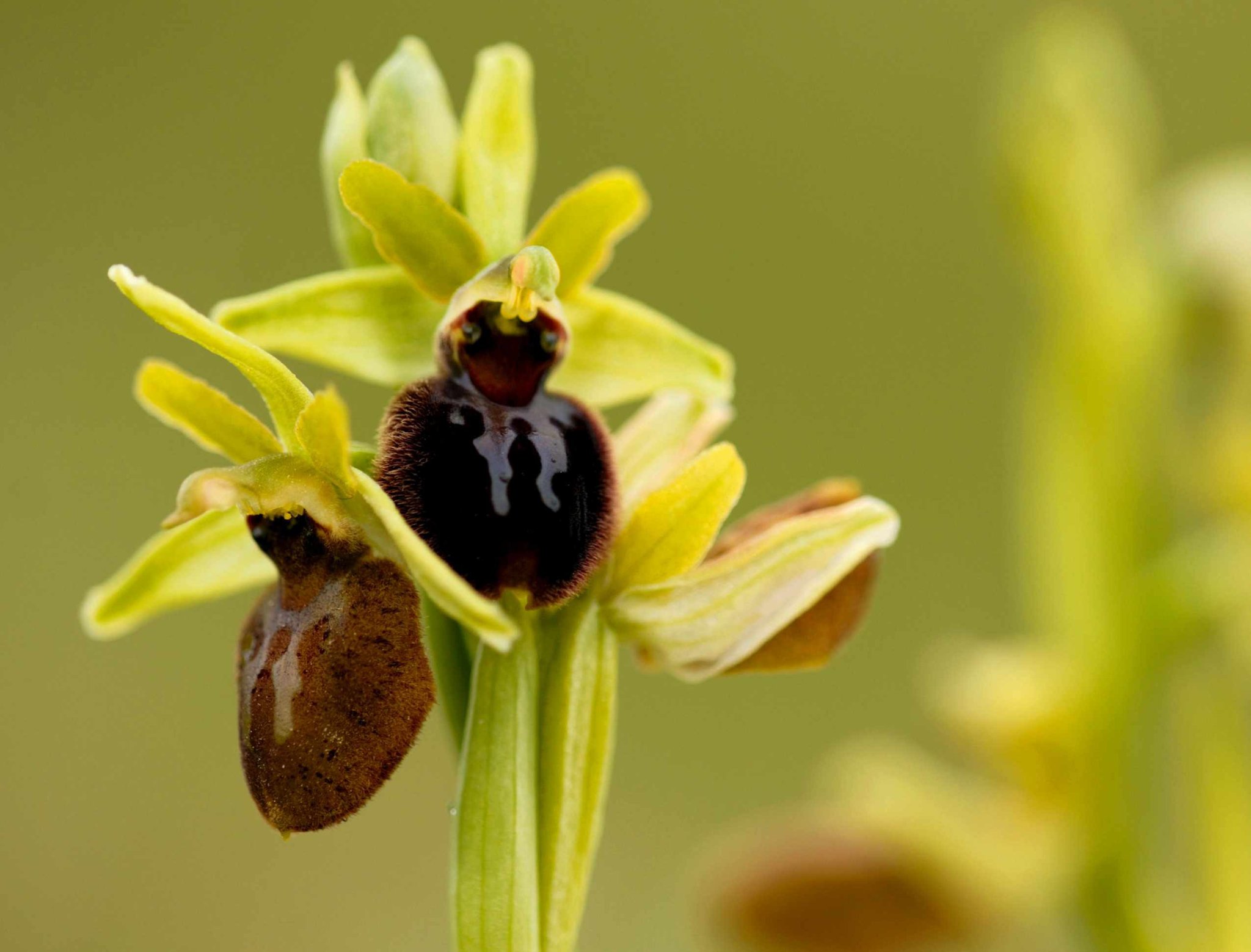
ANOTHER GOOD EXAMPLE IS plants’ use of ultraviolet pigment. Many flowers are decorated with hidden patterns written in botanical invisible ink. A buttercup, for example, might just look bright yellow to you and me, but to a bee – which can observe the ultraviolet spectrum – it has a large black splodge in the centre. Plants use these hidden patterns to direct visiting insects to the nectar – and in doing so make sure they come into contact with their all-important reproductive parts.
Some species have taken this one step further, too, changing colour to communicate with their pollinators. Forget-me-nots – those dainty flowers with five sky-blue petals surrounding a yellow ring – colour-code their blooms. Once a flower has been pollinated, the yellow ring at its centre (which to an insect appears black) fades to white, signalling to visitors that there’s no more nectar and directing them towards as-yet unpollinated blooms.
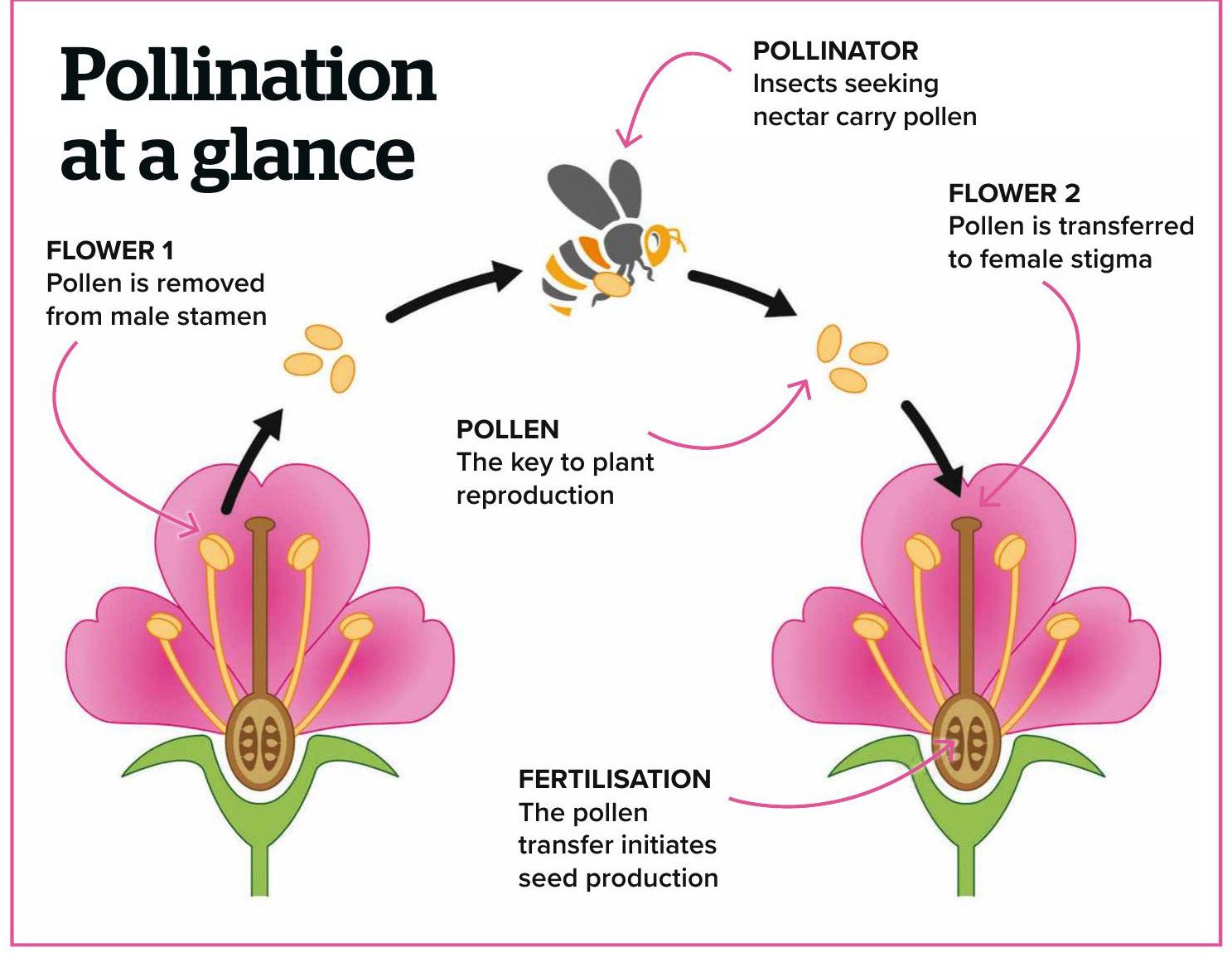
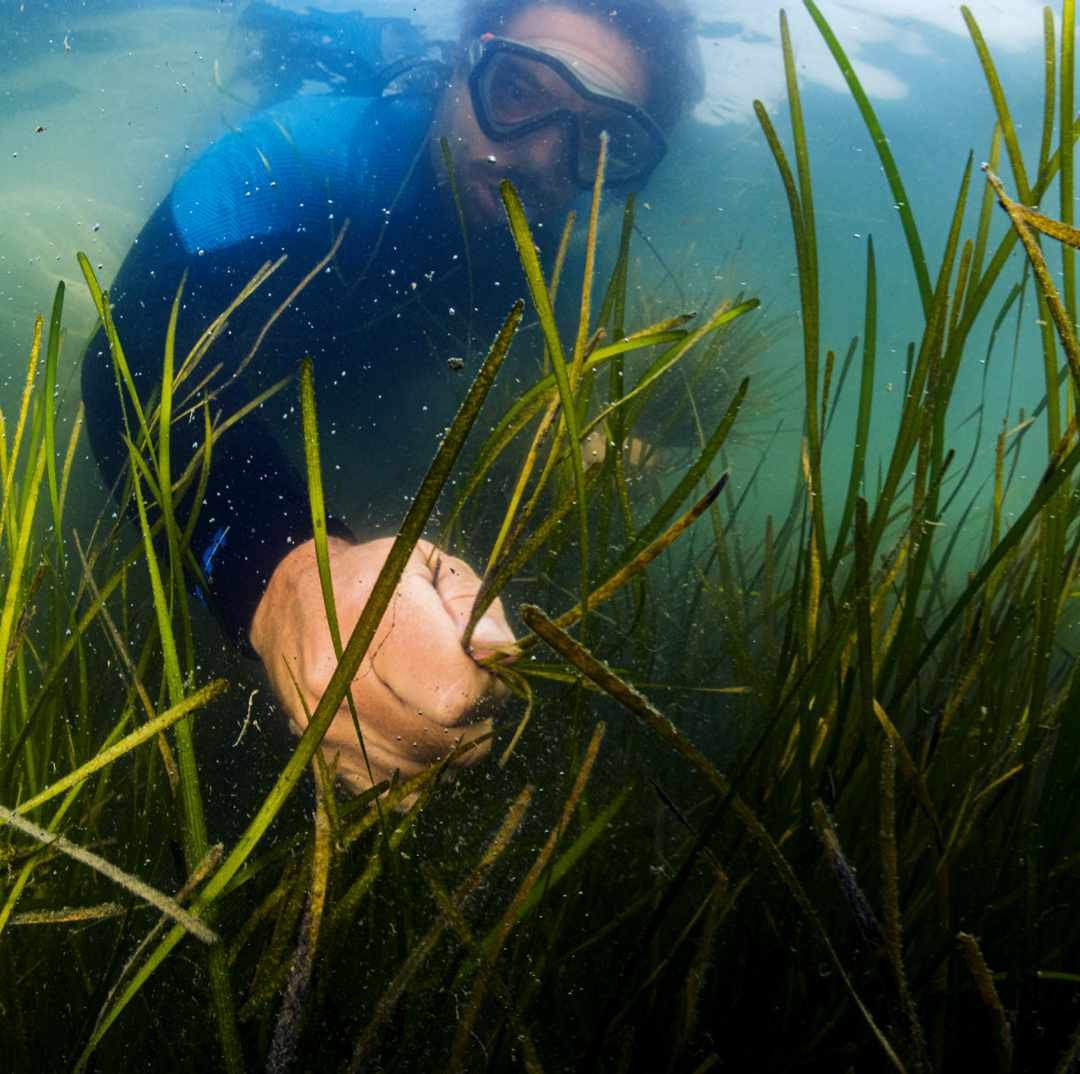
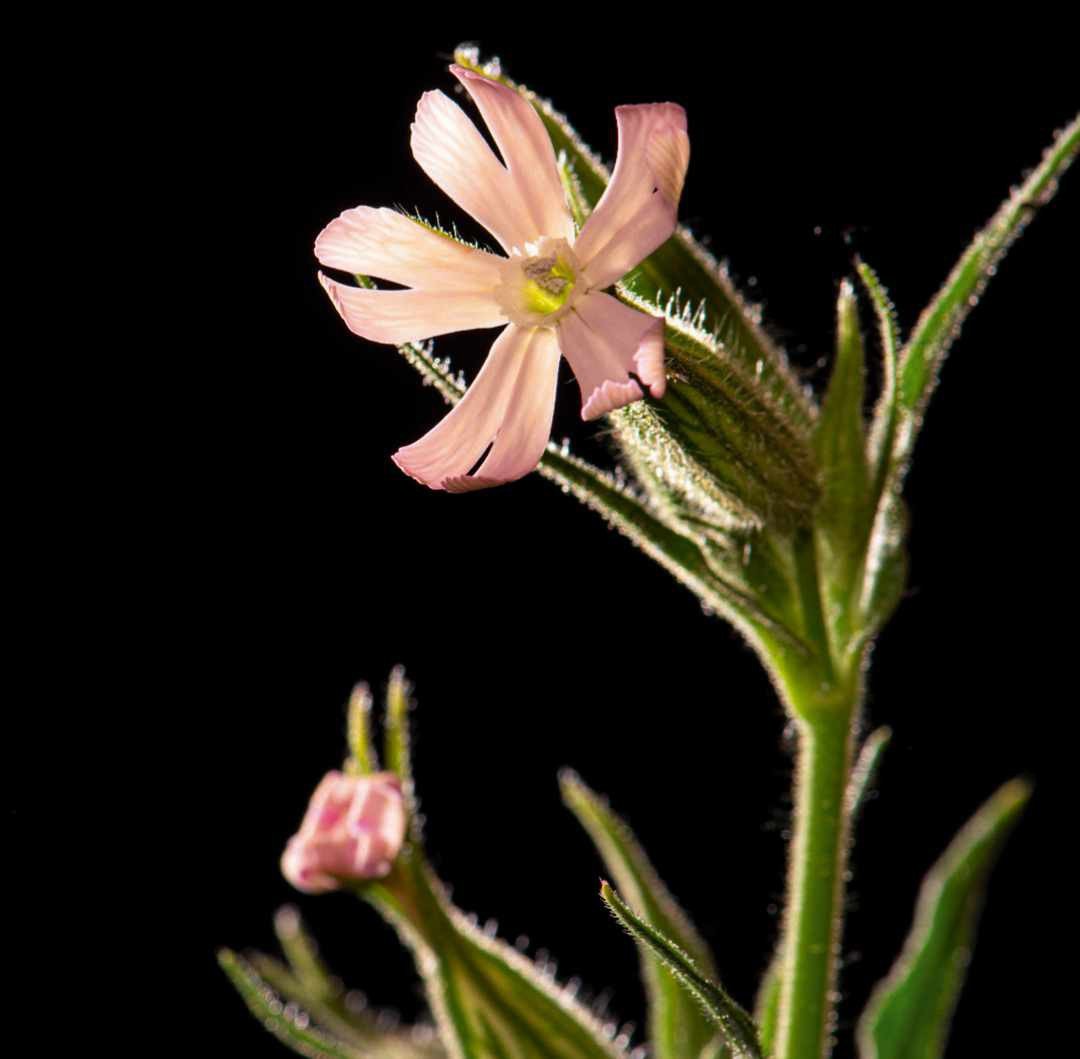
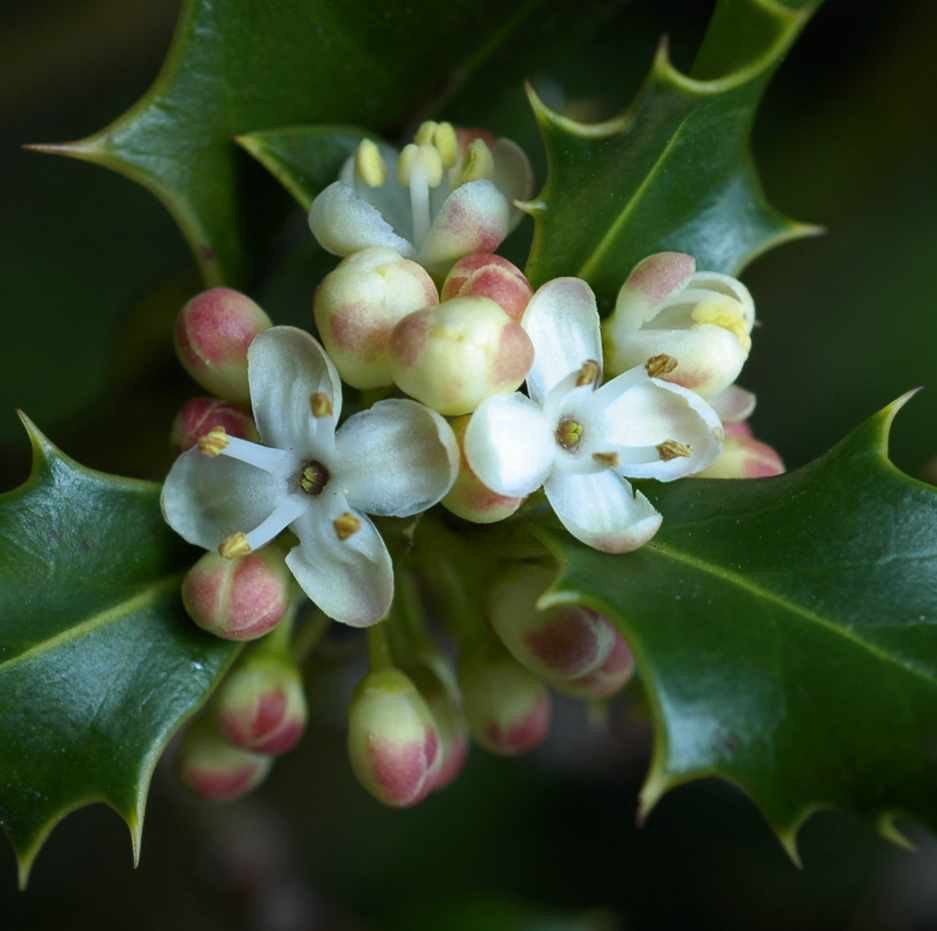

But as in any system that involves cooperation between individuals, it’s only a matter of time before the cheats arrive. In the world of pollination, none are more spectacular than the insect-mimicking orchids. The flowers of the early spiderorchid are uncannily insect-like. While most plants entice pollinators by offering nectar, these orchids lure them in with the promise of bee sex. The early spider-orchid has finetuned itself over evolutionary time to mimic the appearance, scent and even the furriness of the female buffish mining bee. In other words, to the male, the flower looks, smells and feels like a female bee. In attempting to mate with the flower, the male bee unwittingly picks up two tiny, sticky pollen sacs that he then transports to the next orchid. It’s an extraordinary fraud, entirely masterminded by a plant.
INSECT POLLINATORS MAY OFFER THEIR clients a direct courier service, but there are many groups of flowering plants that do things differently. Marine eelgrasses release thousands of tiny pollen grains into the water column in the hope that some will find a female flower. Other species – among them a buttercup called lesser spearwort – have developed ways to use rain to pollinate their flowers when wet weather means visits from insects are sparse.
It would also be remiss to write about pollination without revisiting that age-old go-between from times gone by: wind. Flowering plants have reverted to wind pollination on numerous occasions, much to the annoyance of those who suffer from hay fever. Wind, after all, is considerably more reliable in the long term than vulnerable animal populations. And the savings are immense: with it being no longer necessary to attract insects, there’s no need to produce energy-rich nectar, scent compounds, coloured pigments or high-protein pollen.
Flower in focus: Foxglove
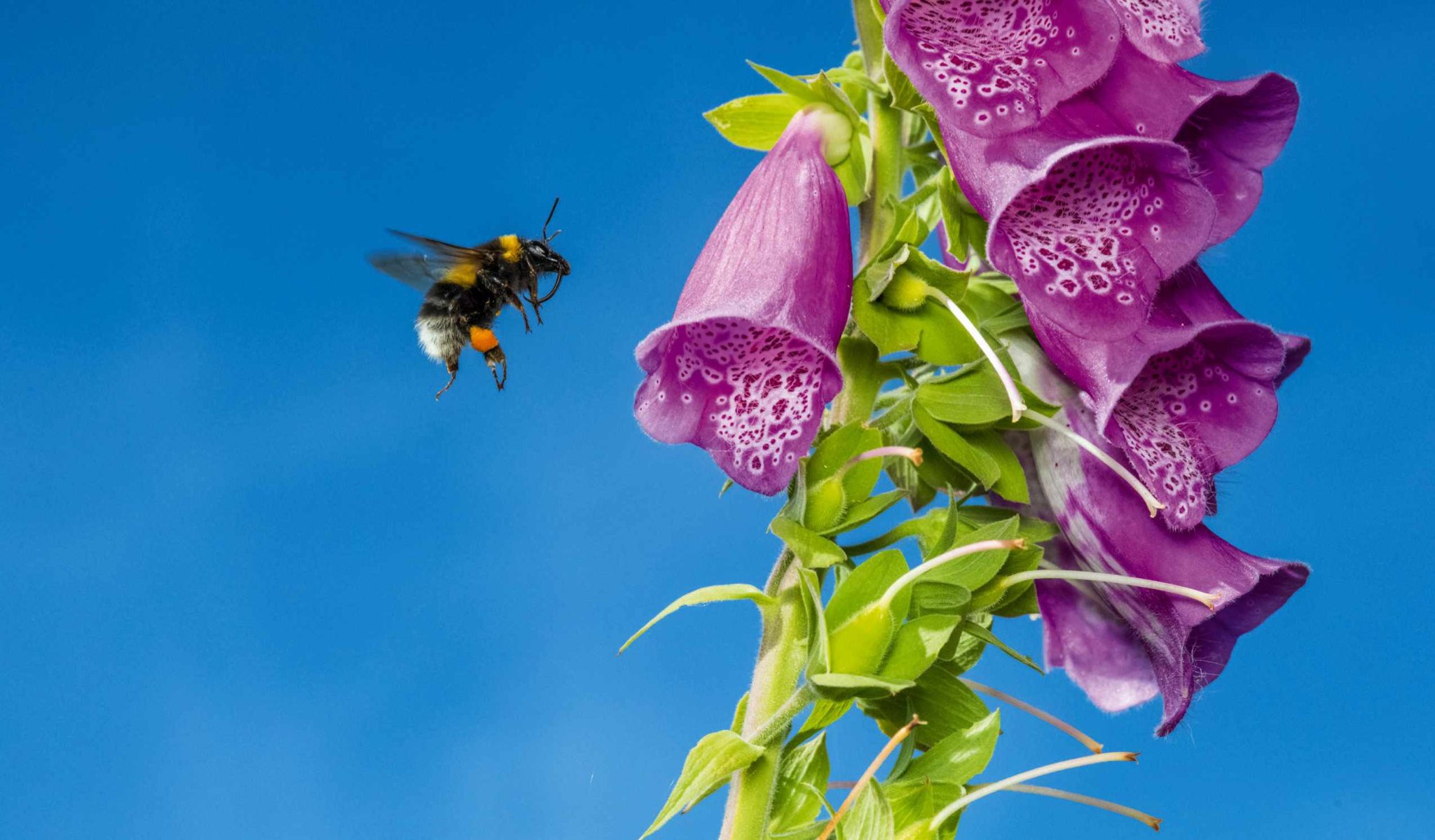
Foxgloves have a clever way of avoiding self-pollination and ensuring cross-pollination between different plants. They flower in sequence from bottom to top, with visiting bees working their way up. As they’re pollinated, foxglove flowers change sex from male (with pollen-bearing stamens) to female (with pollen-receiving stigmas). When a bee first flies to the older female flowers at the base of the stem, it will deposit pollen from another plant, gradually working its way up until it reaches the younger male flowers. Here, it will pick up fresh pollen to take to a new plant, repeating the process all over again.
Today, about 10 per cent of flowering plant species are pollinated by the wind.
Hazel is one such example. As January rolls into February, a wood-wide network of tiny, anemone-like female flowers is set up to catch wind-blown pollen. Hazel’s male flowers are packed into catkins that dangle like lambs’ tails, shivering at the slightest draught and releasing pollen into the air, which is carried on the breeze to the stigmas of the female flowers, ideally on a hazel some distance away. With no need for insects, they bloom early in the year when woodland foliage is at its thinnest and the wind is free to move through the trees relatively unhindered.
If you’re a flowering plant, ensuring your pollen – and the genetic material it contains – is transferred to a different plant is very important to guarantee healthy offspring. Pollinating yourself accidentally is best avoided, so most plants have made efforts to ensure this doesn’t happen. Some species, like holly, go to extreme lengths, separating male and female flowers onto different plants entirely. If you have a holly in the garden that never produces berries, it’s because it’s a male tree. Other plants, such as foxgloves, sync themselves beautifully with the methodical foraging behaviour of bumblebees (see box above).
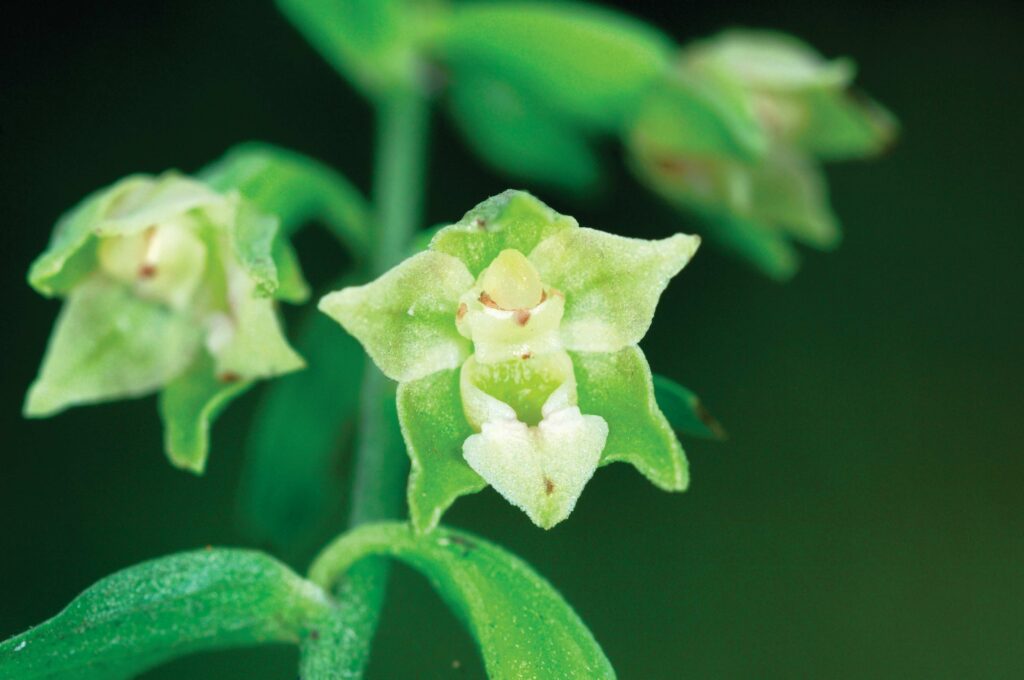
“Pollinating another individual isn’t always possible and, for some species, just isn’t their cup of tea”
But pollinating another individual isn’t always possible and, for some species, just isn’t their cup of tea. There are numerous species that forego wind, water and animal pollination altogether, and just get on with the job themselves. The green-flowered helleborine is one of these, often pollinating itself before the flower buds have even opened.
It’s amazing what plants can do and what they get up to. Pollination involves so much more than we might ever have imagined. It’s so exciting to share our home with plants that have gone to such interesting and extraordinary lengths to get some action. They generate heat, hide patterns in invisible ink, communicate with colour changes, and even risk genetic health, all in the name of moving pollen from stamen to stigma.
TO HUMANS, JUST AS IT IS TO plants, pollination is everything. In Britain, one third of our food crops are pollinated by insects. Honeybees account for between 5-15 per cent of them, while the other 85-95 per cent are made up of wild insects such as solitary mining and mason bees, wasps and flies.
Our flying insects are in deep trouble, though. As many as 60 per cent of them have disappeared in the past 20 years.
And our plants? Well, pollination is even more important to them than it is to us. For most of the 80 per cent that produce flowers, it’s their entire future. And given their position at the heart of the food web, it’s very much in our interest to prioritise them. Pollination is a process we take for granted. It goes on all around us, often largely or entirely unseen. And it’s one we must protect with everything we have.
Flower in focus: Lords-and-ladies
What goes on inside the lords-and-ladies plant is quite unexpected. These plants have got pollination down to a T.
Rising from a green, leafy cocoon is a chocolate-brown, phallic organ known as a spadix that – like a mammal – is capable of generating heat. Thermalimaging studies have shown that, on the first day of flowering, the temperature of the spadix can climb above 30°C. Why they do this is not known for certain, but the most likely explanation is to evaporate smelly scent compounds to attract flies.
These flies crawl into a chamber below the spadix, immediately passing through a mesh of downward pointing hairs that prevent them from leaving. Any pollen that the flies have previously collected gets deposited on the yellow female flowers at the bottom of the chamber.
Once these have been fertilised, the red male flowers above shed their pollen onto the insects. The hairs at the entrance to the chamber then wither, allowing the freshly coated insects to escape and pollinate another plant.
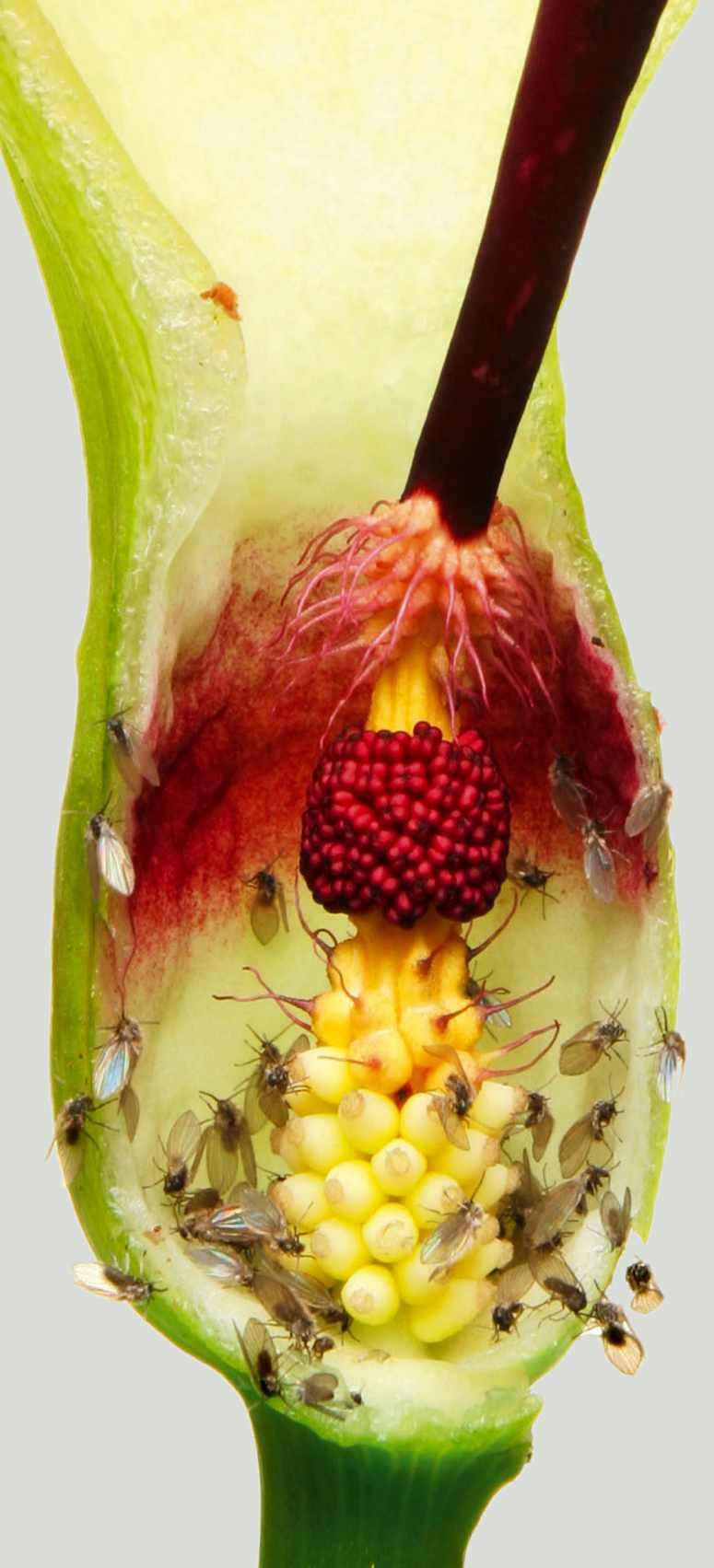
ABOUT THE AUTHOR

Leif Bersweden is a botanist and author and runs plant ID courses. His latest book is Where the Wildflowers Grow (Hodder & Stoughton, £10.99). Visit leifbersweden.com.